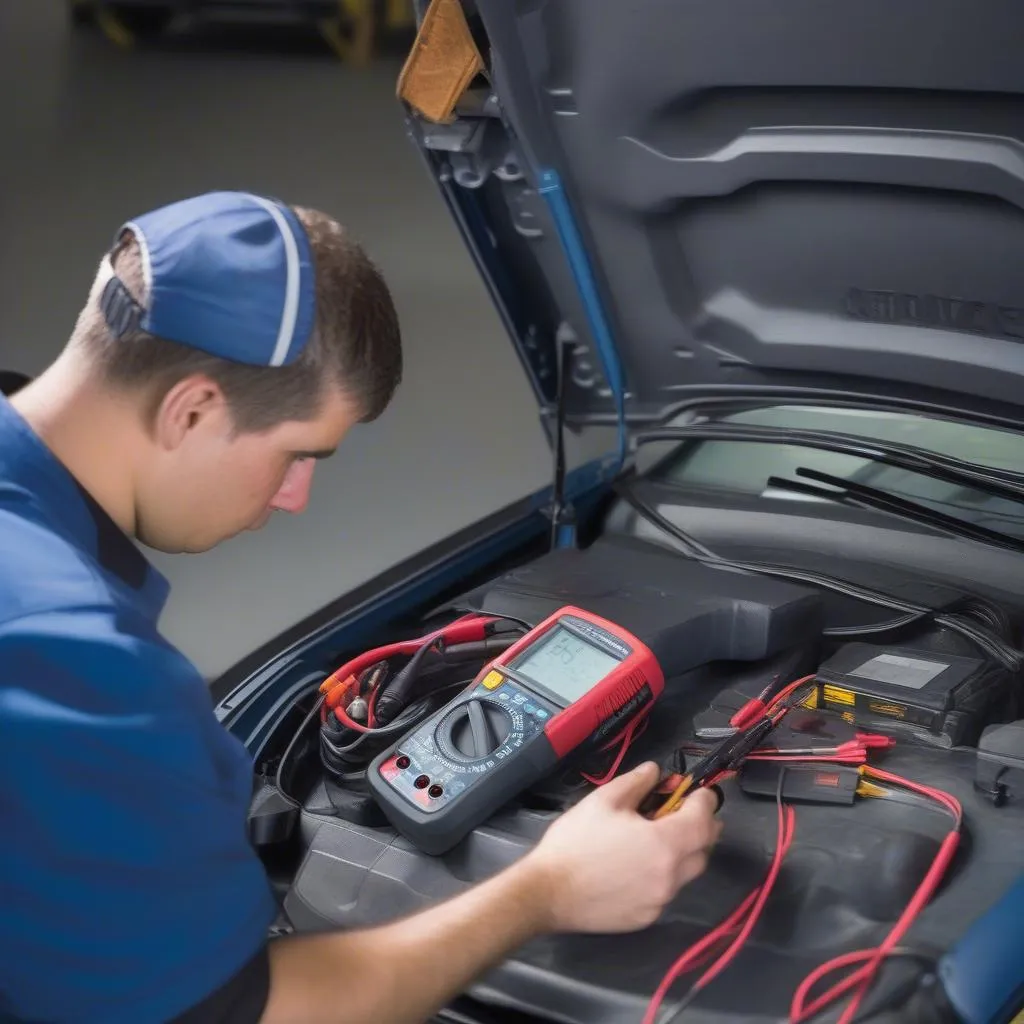Imagine this: You’re working on your European car, trying to diagnose an issue, and you need to use a diagnostic scanner. You plug the scanner into the OBD port, but nothing happens. No power, no communication, just a frustrating silence. You check the fuse, you try another port, but the problem persists. You’re left wondering, “Why isn’t there 12V on the OBD port?”
Understanding the Significance of 12V on the OBD Port
The OBD (On-Board Diagnostics) port is the gateway to your car’s computer system. It allows you to connect diagnostic scanners and other devices to access real-time data, read error codes, and perform various diagnostic tests. The OBD port requires 12V power to function correctly, and this power supply is typically provided through the vehicle’s wiring harness.
From a Mechanic’s Perspective
For an auto mechanic, the lack of 12V on the OBD port means a crucial diagnostic tool is unavailable. This can delay repairs, frustrate customers, and potentially lead to misdiagnosis.
From an Automotive Engineering Perspective
From an automotive engineering standpoint, the OBD port is essential for monitoring and troubleshooting vehicle systems. The lack of 12V can indicate a problem with the wiring harness, fuse, or even the vehicle’s electrical system.
From an Economic Perspective
In a world where cars are becoming increasingly complex, OBD diagnostics are crucial for efficient and cost-effective repairs. A faulty OBD port can lead to unnecessary delays, increased labor costs, and potentially even misdiagnosis, ultimately impacting both the mechanic and the customer.
Troubleshooting 12V Absence on the OBD Port
If you’re encountering this issue, don’t panic! Here are some common causes and solutions to get your OBD port back online:
1. Check the Fuse
The OBD port’s power supply is usually controlled by a fuse. A blown fuse is a common culprit for a lack of 12V. You can check the fuse box for a fuse labeled “OBD” or “Diagnostic.” If the fuse is blown, replace it with a fuse of the same amperage.
2. Examine the Wiring Harness
The wiring harness connecting the OBD port to the vehicle’s electrical system can become damaged over time. Inspect the wiring harness for any signs of wear, corrosion, or loose connections. Repair or replace any damaged wiring as needed.
3. Verify the Connection
Ensure the OBD port is securely connected to the diagnostic scanner. Sometimes, a loose connection can prevent the scanner from receiving power. Try plugging the scanner in and out a few times to make sure the connection is secure.
4. Consider Other Electrical Issues
In some cases, the lack of 12V on the OBD port may be related to a broader electrical issue within the vehicle. If you’ve checked the fuse and wiring harness and still have no power, consult a qualified mechanic to investigate further.
Frequently Asked Questions
Q: Can I use a 12V power supply to power the OBD port?
A: While you can technically use a 12V power supply, it’s not recommended. This could potentially damage the vehicle’s electrical system or the diagnostic scanner. Always rely on the vehicle’s existing power supply for the OBD port.
Q: How do I know if my OBD port is working correctly?
A: You can check the OBD port’s functionality by connecting a diagnostic scanner and seeing if it communicates with the vehicle’s computer. If the scanner detects the vehicle and displays data, then the OBD port is working correctly.
Q: What if my car doesn’t have an OBD port?
A: Most cars manufactured after 1996 have an OBD port. If your car doesn’t have one, you may need to use a specialized diagnostic tool.
Related Content
- OBD II Pinout Diagram for 2001 Dodge Van
- 24V OBD: Understanding the Difference
- OBD II Code U0029: What It Means and How to Fix It (2010 Honda Insight)
- Can a 12V USB Power Supply be Used with SEC 12V OBD?
- OBD USB Charger: A Convenient Way to Power Your Devices
Need Help?
If you’re still struggling with getting 12V on your OBD port, don’t hesitate to reach out! We have a team of experienced technicians available 24/7 to assist you with your automotive diagnostic needs. Contact us via Whatsapp at +84767531508.
 Troubleshooting OBD Port Power Issues
Troubleshooting OBD Port Power Issues
Conclusion
Getting 12V on the OBD port is essential for diagnosing and repairing your car. By checking the fuse, examining the wiring harness, and verifying the connection, you can troubleshoot most power issues. If you’re still having trouble, it’s always best to consult a qualified mechanic. Remember, a properly functioning OBD port can save you time, money, and headaches in the long run!
Leave a comment below if you have any questions or would like to share your own OBD port troubleshooting experience. And be sure to check out our other articles for more helpful automotive insights.